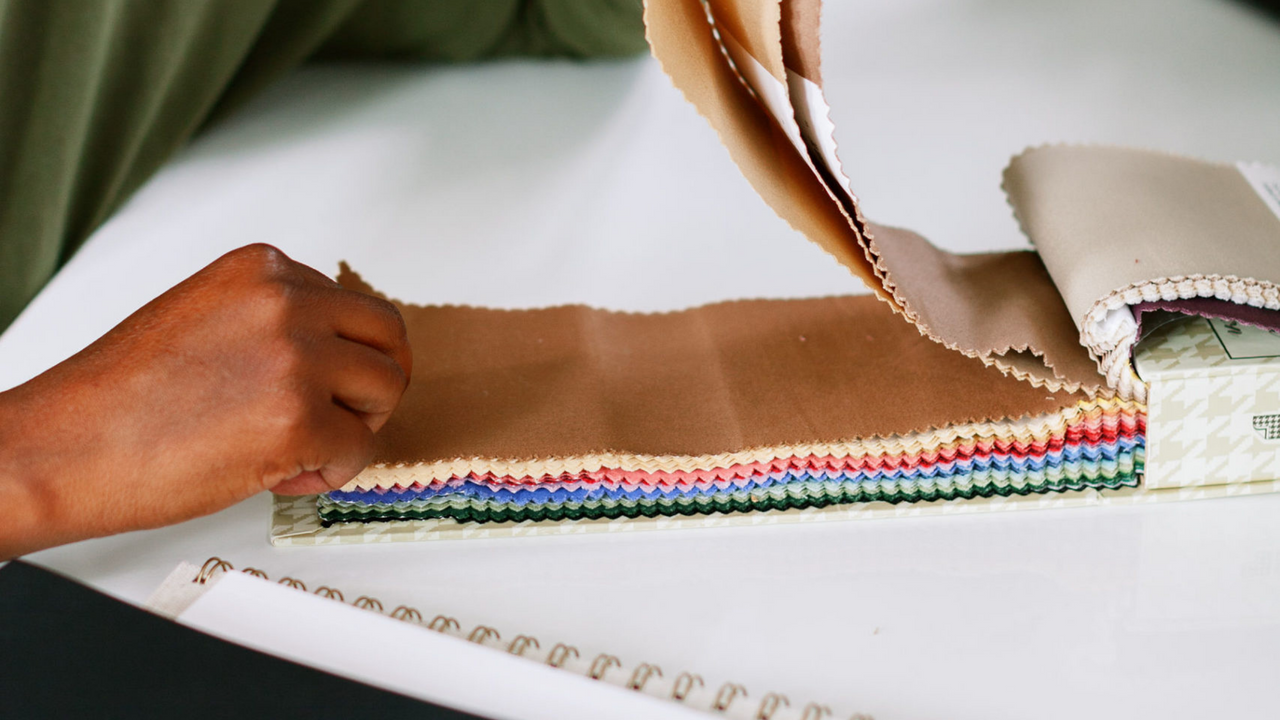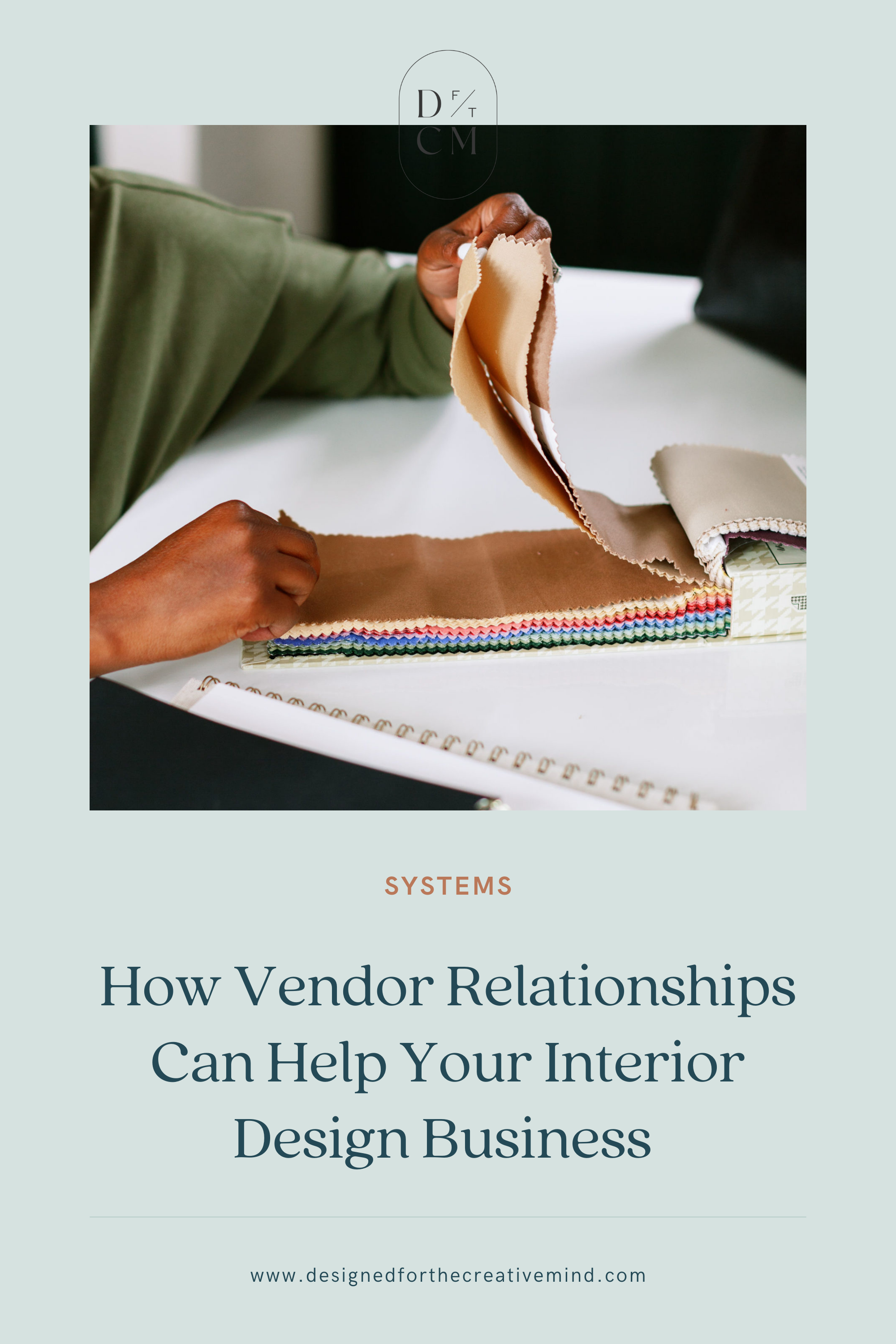How Vendor Relationships Can Help Your Interior Design Business

Vendors are an essential part of your success as a designer. Whether you’re a solopreneur or you have a team working for you, you need vendors to complete projects. But what vendors do you need? Which ones are necessary? And how do you keep these vendor relationships?
Up next, I’ll guide you through the most important vendor relationships you need to build (and keep), where to find these vendors, and how to tell if they’re the right vendors for you. Just keep reading.
What Vendors Do You Need to Work With?
The goal is to make money while doing what you love, right? So while you’re doing the designing, you need to be able to outsource certain jobs to trusted vendors. Sure, there are some things you might think oh I can do that myself, you’re sacrificing your time that could be spent doing other things.
So it might feel like you’re saving you (and your client) some money, but in the long run it’ll end up costing you. Not to mention… there’s always the risk that you don’t do it right, so why chance it? There are plenty of experts out there that are brilliant in their craft, ready to join you as an extended member of your team.
Now for the important part. Exactly which vendor relationships should you work on developing? We have a complete list for you to reference, right here:
- Builders
- Architecture firms
- Furniture and home decor source
- Tile and flooring experts
- Plumbers
- Lighting
- Fixtures
- Movers and installation experts
- Painters
This list encompasses all of the vendors and experts that you must know. Of course, having an arsenal of vendors will come in handy, but if you’re starting small, these folks are key.
How to Find Reliable Vendors
Trial and error is not an option here. The outcome of a failed vendor partnership can have major fallout, and it’s just not worth the risk. You need to develop relationships with trusted vendors that have an established reputation in their industry. This doesn’t mean you shouldn’t use new-to-the-game vendors, but it wouldn’t be wise to build an entire project around newbies.
Tradeshows and Networking Events
There’s more going on at these events than just trending designs! While you’re busy scoping out the seasons hottest finds, be on the lookout for quality vendors that work in your area. It’s helpful to meet vendors in person before you work with them, to help possibly eliminate any surprises and get a feel for how you might potentially work together.
Markets, Design Centers, and Showrooms
Developing local relationships is incredibly important. Supporting local businesses in your area is a great way to get your name out there, and to dive a little deeper into the local scene. Meeting vendors through these outlets often (although not always) means that they’ve been working within the community and have already developed relationships.
Vendors that work in your community are knowledgeable about local products that work best for your area… like what hardwoods are best for your climate? And what outdoor fabrics can tolerate your crazy weather changes? The list goes on, but you get the point!
The Good Old Fashioned Internet
Don’t underestimate the power of Google… but don’t overestimate it either. With search engines, you’re able to see reviews from past clients and colleagues. Reviews can help gauge a company, or individual’s, strengths and weaknesses. You can also get a feel for any nuances that might be important if you do opt to work together.
Also, keep an eye out for companies with no reviews- again, you don’t necessarily want to be the first to work with a vendor, being someone else’s learning curve.
Websites like Houzz and Angi are a good place to search, too. They have a larger collection of names, and it’s easy to narrow down your search criteria to find someone that specializes in exactly what you’re looking for.
Other Vendors
This might go without saying, but asking one of your existing vendors for a recommendation is a solid way to find someone that’s an expert in their craft with the experience you’re looking for. Asking those you know is also helpful to learn who you might not mesh well with personality-wise, which will inevitably impact your workflow.

Maintaining Vendor Relationships
This might sound like the easiest piece to the vendor puzzle, but that’s not always the case, as many of you already probably know. While many vendors conduct themselves with class and professionalism, there are some that… well… don’t.
Below are a few things that I always do when working with any vendor. These are absolute musts to maintaining these relationships, as well as your reputation.
Communication is Key
There’s no such thing as over-communicating on a job site! The logistics when you’re working alone are overwhelming, so it’s only more complicated when you add vendors to the mix. It helps to talk through everything, but it’s also important to put everything in writing.
Respect is a Two Way Street
Again, this should always be the case, but there are just some people that don’t subscribe to this rule of general human decency. Although hopefully, you’ve chosen vendors that won’t have this issue. But you have to treat vendors with the utmost respect.
They’re not employees, they don’t work for you, they’re working with you. Although for the record, you should also treat your employees with the same level of respect.
Trust Your Vendors
You wouldn’t visit your doctor only to argue with them or challenge their knowledge, right? Or hover around the mechanic to monitor a brake repair? The same goes for your vendors. Trust their expertise and treat them as the professionals they are. Ask them questions and listen to their answers. Show them that you value their opinion, and let them do. their. thing.
Final Thoughts
Now you know exactly what vendors you need in your life, where to find them, and how to maintain relationships with these vendors. I’m confident in all of this because I’ve made the mistakes of putting my eggs in the basket of the wrong vendors, as well as the right ones. Just like other aspects of the business of design, I’ve gone through the process… and I’m ready to share my journey with others so they can avoid some of the speed bumps I encountered.
Just like me, you can run a 6 or 7-figure interior design business like clockwork — without the mountain of overwhelming responsibility. To find out more on how you can be in this very same boat, click to learn more about Interior Design Business Bakery, join my Facebook Group, or apply for one-on-one coaching.





